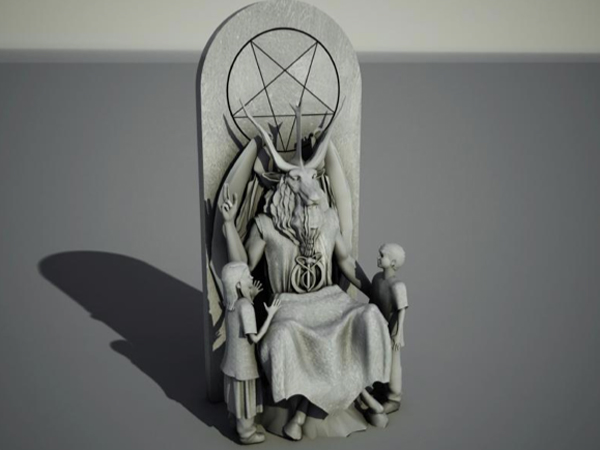One of the IE
cultures that the most change can be seen is that of the Romans. Much of the change occurred culturally and
religiously as they went from mostly agrarian to a militarized nation that
became bent on ‘world’ domination. As an agrarian culture many of the Roman
deities centered on land and agricultural figures. This however changed as the
nation encountered other IE and non-IE nations.
An example of this
evolution given by Damen is that of Mars. Damen says “…who was originally
associated with vegetation and could easily have passed into oblivion as well.
Instead, however, when later Romans began to militarize, Mars managed somehow
to shed his agrarian trappings, flee the silo and head out onto the
battlefield, by morphing himself into a war-god…” (Damen, 2013)
As the Romans
encountered the Greeks, their gods became associated with those from the Hellenic
religion. Much of this may have been due to the overwhelming popularity and
wide spread literature of the time such as the Iliad, the Odyssey, the Homeric
Hymns and the like. However according to Damen these changes were “…a change of
name but not core values. Indeed, if any enduring "theology" guided
early Rome, if there was an abiding
moral principle that governed the burgeoning super-power, it was patriotism.” (Damen, 2013)
Much of the Roman moral and religious belief was centered on self-sacrifice for
the betterment of the state over that of the individual. However even this
strong cohesion began to falter and devolved into civil war that tore the
nation into smaller “Romes” much like the city states in Greek. Damen goes on
to talk about how some of the early emperors tried to unify the fragmented
nation into a single system of religion and state in what we call today
emperor-worship.
It might be this
very effort of unification that opened Rome to so many varying cults. Damen
talks about three main cults that were major influences on Rome being the
Cybele cults, the Isis cults and that of Mirthas.
The Cybele cults
originated in Asia Minor and centered on the earth-mother Cybele. Cybele was
attributed with protecting her followers in war. This aspect would have been
very important to Rome at the time as they were engaged in the Punic Wars from
264 BCE to 146 BCE. The aspect of her as an earth-mother and fertility goddess would
speak to their recent past as an agrarian culture. Cybele’s consort was a young
male named Attis who died each year only to be reborn in the spring. This belief
must have spoken of an eternal afterlife that would have soothed the trouble
spirits of those fighting in wars. Strangely enough, this seems very similar to
the ideology behind the Hellenic Eleusinian Mysteries. Over time, the Roman government
decided to attempt outlawing the Cybele cults as they tended to be an affront
to the very sensible nature of Rome with their ecstatic rituals and eunuch
priests. But it is easy to see how this set the stage for a less dramatic faith
to one day take hold.
The cult of Isis found its way into the Roman heart because
as Damen puts it… “… one much less manic and more attractive to the
prim-and-proper set…” Though Isis embodied the symbols of renewed life and
fertility, much of her worship was wrapped up in Mysteries. One of the key sets
of beliefs that may have won the Romans over could have been that Isis
“…promised her worshipers immortality and personal communion with the goddess.”
This is something that would have appealed to Romans who wanted to be the model
of civilization but it would have also feed the growing independence and need
for personal importance which Romans were beginning to express as their
selflessness for the state grew.
The Cult of Mithras is perhaps the most wide spread
and long lived within the Roman Empire. This might very well be due to the fact
that it was mostly soldiers and working class men. What is known of the rites
of Mithras, as it was a Mystery cult as well, is that there was a ritual
feasting and a baptism of blood from a sacred bull. Though there are various
time frames in which Mithras appears, it is in this “male” dominated cult that
we have the most knowledge. It could be said that when the cult was imported
from the Asia Minor regions that it gave soldiers and the working class man a
place of standing and importance within a religious context. This would have
satisfied the growing need for self-importance that seemed to be growing ever more
important the Roman citizen.
It is not hard to see how Christianity was able to
become the dominant religion within the Roman Empire. It satisfied the
individual’s need to be important and commune with a deity on a personal level.
It also promised immortality in an afterlife through its brand of Mysteries.
With the histories we have of Rome and its empire, we
can see the influences of religious and cultural ‘invaders’ over time. We can
see how this IE culture changed and evolved as the world around it changed.
Perhaps it was the most malleable of the IE cultures since it seemed to shift
and morph as its boarders grew to encompass
Works Cited
Damen, M. (2013). Section 12 - Roman Cults and
Worship. Retrieved 7 1, 2014, from Utah State University:
http://www.usu.edu/markdamen/1320hist&Civ/chapters/12CULTS.htm
 Previously I mentioned the use of an indoor composting unit from All Seasons. Well mine arrived Friday while we were out of town. I got started Sunday afternoon when we got home with the scraps from our veggie noodles, old food in the frig that needed to be thrown away, and hard bit of blocked cheese. Monday I added egg shells from John's breakfast and again this morning. It has been going the for two days... and already it is breaking down the food without an odor. There is a fair amount of "tea" already being created as well. I am totally amazed! I can't wait to get the first "tea" out to feed my plants as well as adding it into my hydroponic system for a natural nutrients. What is driving this change? Well I want to stop wasting all the cast offs of our food or leftovers which we just aren't going to eat. Here is the small amount that has already been produced from just 48 hours of composting (see Image 2)! Image 3 is of the actual materials being composted. I am so shocked at how much they are already being broken down.
Previously I mentioned the use of an indoor composting unit from All Seasons. Well mine arrived Friday while we were out of town. I got started Sunday afternoon when we got home with the scraps from our veggie noodles, old food in the frig that needed to be thrown away, and hard bit of blocked cheese. Monday I added egg shells from John's breakfast and again this morning. It has been going the for two days... and already it is breaking down the food without an odor. There is a fair amount of "tea" already being created as well. I am totally amazed! I can't wait to get the first "tea" out to feed my plants as well as adding it into my hydroponic system for a natural nutrients. What is driving this change? Well I want to stop wasting all the cast offs of our food or leftovers which we just aren't going to eat. Here is the small amount that has already been produced from just 48 hours of composting (see Image 2)! Image 3 is of the actual materials being composted. I am so shocked at how much they are already being broken down.



